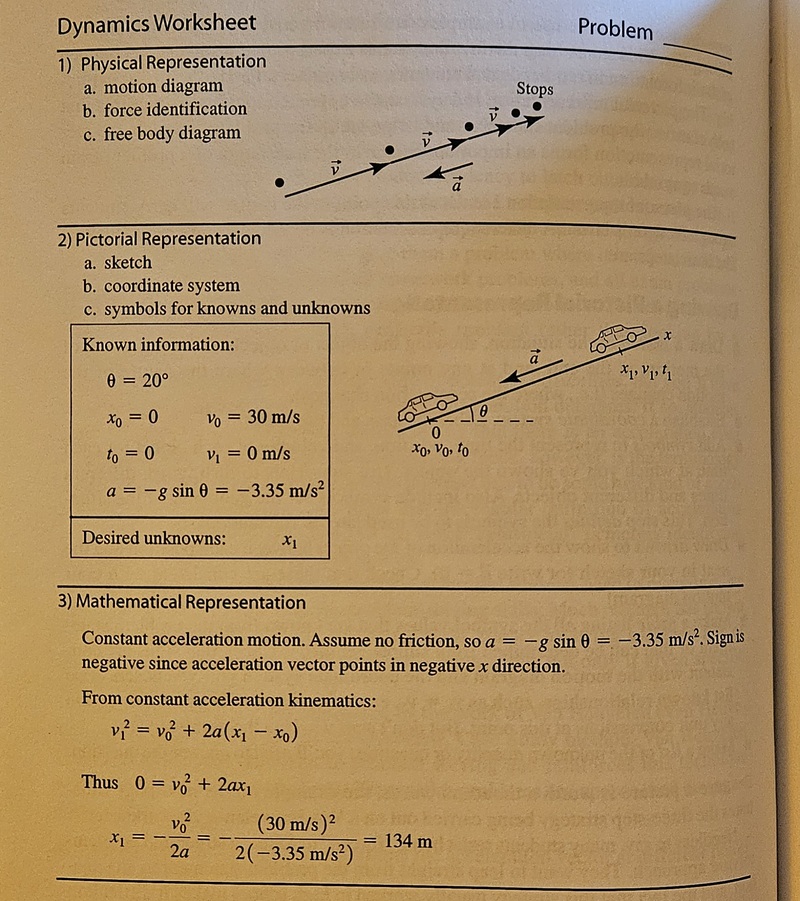Drawing good pictorial representations
Drawing any old picture is not usually helpful for problem solving, and seeing how to draw the right picture is a skill.
- Sketch the situation, showing the objects at the beginning and end of motion, and at any points in between where the nature of motion changes (like where the acceleration changes)
- Establish a coordinate system, and label the axes and origin with their meanings
- Add symbols to represent time, position, and velocity of each object for each time at which you've shown the object. Use subscripts to distinguish different times and objects. Include symbols for the geometry of the problem. Every variable used later should have a representation on the drawing, even if its value is known from the start.
- Draw arrows to show the acceleration of the object between each positionand the next in your sketch (or write
). Make sure they are consistent with the motion diagram! - Make a table listing all of the symbols that are known from the problem statement or that can be easily deduced from simple geometry. Check that your signs are consistent with the motion diagram and the coordinate system. Do any unit conversions that are needed as you are filling in the table.
- Add known relationships between the symbols to the table as well, for example if
, put that in the table - Make a list of the unknown quantities that you'll need in order to answer the question
The purpose of this is to make it as easy as possible to choose which kinematic equations are appropriate, and to ensure that you get the right bits of data into them with the right signs. Do not skip any step.
